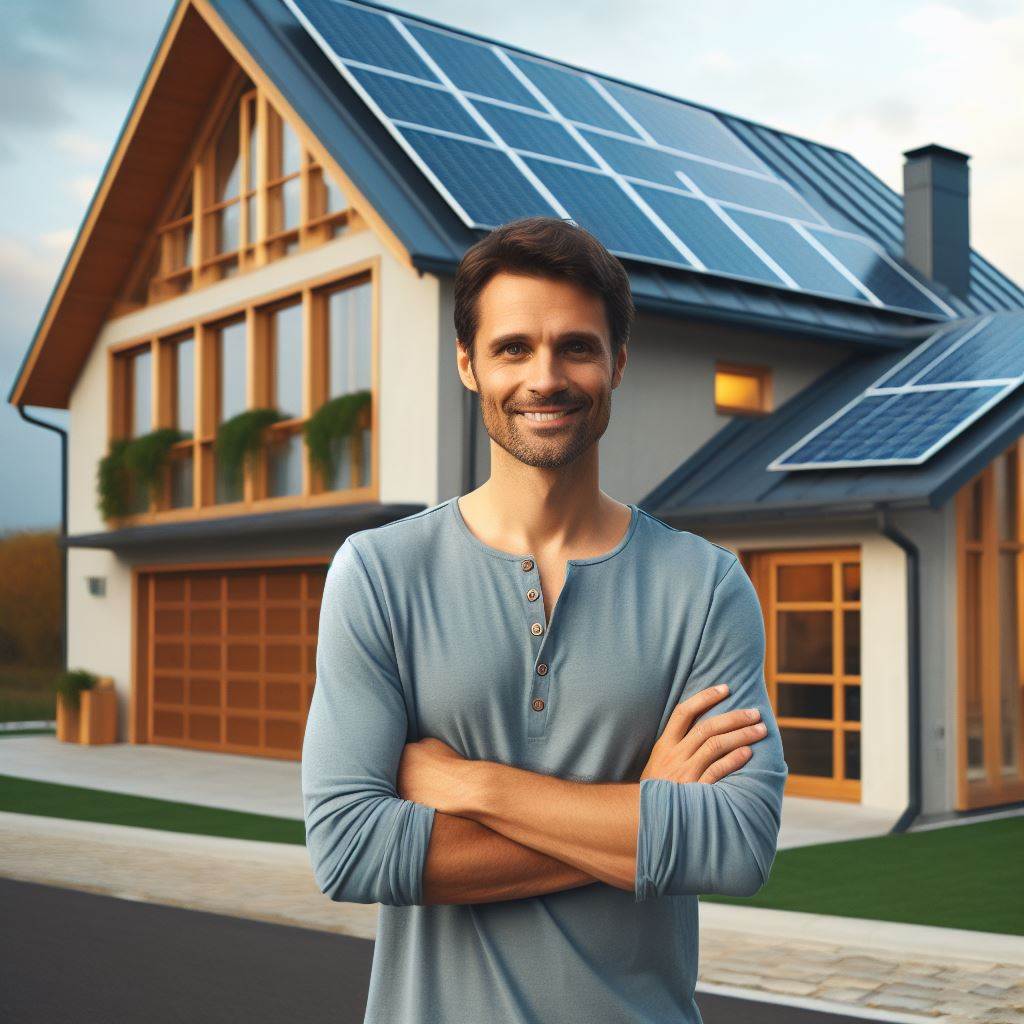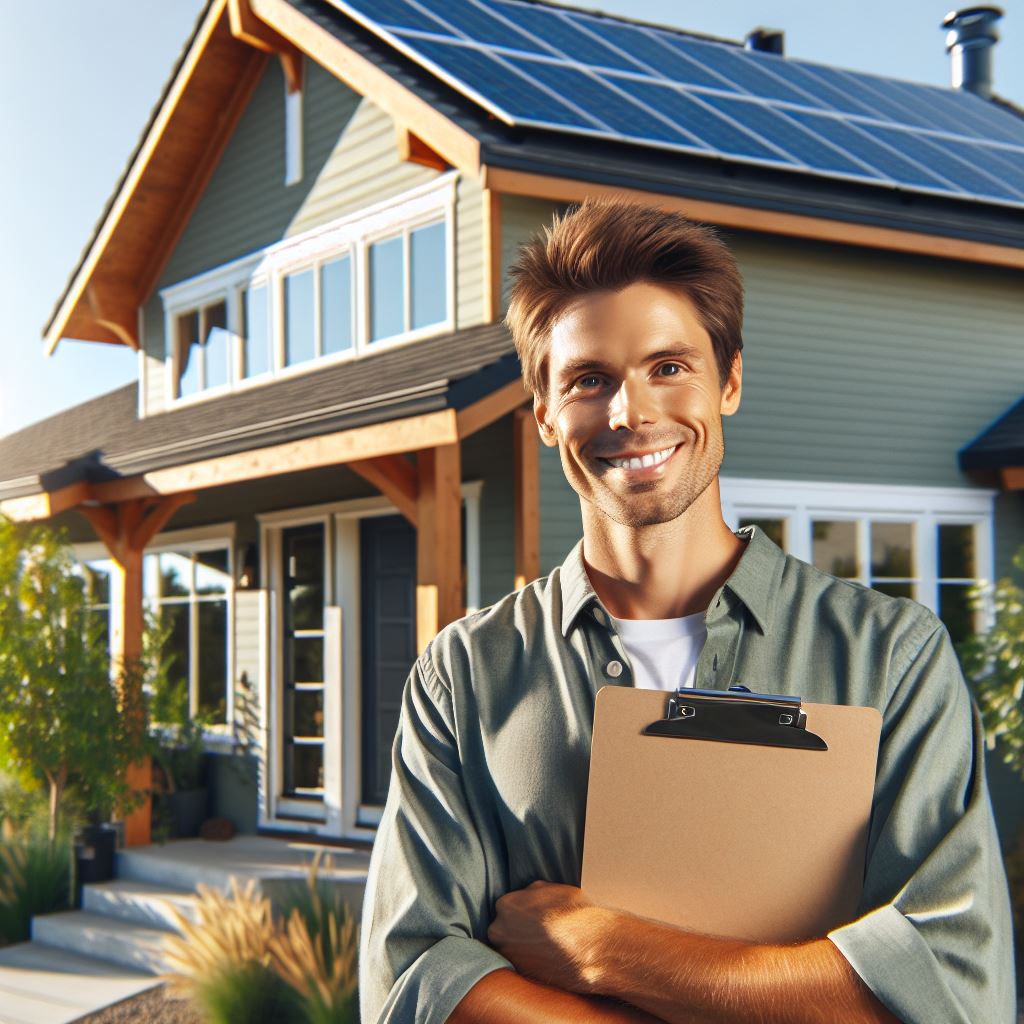Introduction
Luxury real estate in the US is a dynamic realm, constantly shaped by evolving trends that cater to the discerning tastes of affluent buyers.
As we navigate through the year 2024, it becomes imperative for investors and industry professionals alike to delve deeply into these trends, as they hold the key to making informed decisions in a highly competitive market.
Understanding the future trends in luxury real estate is more than just staying abreast of surface-level changes; it is about gaining profound insights into the shifting preferences and expectations of high-net-worth individuals.
The landscape is marked by a continuous transformation in the definition of luxury, with new considerations taking precedence.
In 2024, we witness a departure from conventional paradigms as emerging trends redefine the market trajectory.
These trends encompass a spectrum of factors, from architectural aesthetics to sustainable features, and from smart home technologies to exclusive amenities.
Buyers are no longer merely seeking opulence; they crave unique experiences and lifestyle integration within their residences.
For industry players, being attuned to these changes is not just a strategic advantage; it is a necessity.
The dynamics of luxury real estate are intricate, and a comprehensive understanding of the emerging trends provides a competitive edge.
Whether it’s adapting marketing strategies or aligning property portfolios, staying ahead of the curve ensures relevance and success.
In the subsequent sections of this exploration into the 2024 trends in US luxury real estate, we will delve into specific aspects, unraveling the nuances that shape this fascinating market.
From the fusion of technology and design to the influence of global events, each facet contributes to the ever-evolving narrative of luxury in the real estate sector.
Current State of Luxury Real Estate in the US
Overview of the current luxury real estate market in the US
The luxury real estate market in the US is thriving, with high demand for upscale properties.
Factors driving this demand include an increase in the number of high-net-worth individuals and foreign investors.
Luxury properties offer exclusive features, such as superior location, high-end amenities, and personalized services.
Transform Your Real Estate Decisions
Unlock personalized real estate insights crafted just for you. Get actionable advice designed to amplify your success.
Get StartedThe growth of technology has significantly impacted the industry, making luxury real estate more accessible to buyers.
Virtual tours and 3D property visualization tools allow potential buyers to view properties remotely.
Smart home technology has become a popular feature in luxury properties, providing convenience and automation.
Sustainability is another key trend in luxury real estate, with a focus on eco-friendly and energy-efficient features.
Green building certifications, solar panels, and rainwater harvesting systems are highly sought after.
The COVID-19 pandemic has also affected the luxury real estate market, with shifts in buyer preferences.
Home offices, private outdoor spaces, and wellness amenities are now in high demand due to increased remote work.
Factors driving the demand for luxury properties
The number of high-net-worth individuals in the US has been steadily growing, fueling the demand for luxury properties.
Foreign investors, particularly from Asia and the Middle East, see US luxury real estate as a safe and profitable investment.
Exclusive features and amenities, such as waterfront locations, private pools, and spa facilities, attract affluent buyers.
Privacy and security are crucial factors driving the demand for luxury properties, especially among celebrities and high-profile individuals.
The desire for prestigious addresses and proximity to renowned schools, cultural institutions, and entertainment options is a significant driver.
Impact of technology and sustainability on the industry
Technology has transformed the luxury real estate industry, offering new ways to market and showcase properties.
Virtual reality tours, drones, and social media platforms enable real estate agents to reach a wider audience.
Showcase Your Real Estate Business
Publish your company profile on our blog for just $200. Gain instant exposure and connect with a dedicated audience of real estate professionals and enthusiasts.
Publish Your ProfileSustainable features and certifications have become a selling point for luxury properties, appealing to environmentally conscious buyers.
Investments in renewable energy sources and green initiatives contribute to the long-term value and appeal of luxury real estate.
Smart home technology improves the functionality and efficiency of luxury properties, enhancing the overall living experience.
Real-time monitoring systems, energy-saving appliances, and automated controls reduce energy consumption and lower utility costs.
Developers are increasingly incorporating sustainable materials, green spaces, and eco-friendly practices in luxury real estate projects.
The integration of technology and sustainability aligns with the evolving priorities and values of luxury property buyers.
In essence, the current state of luxury real estate in the US is thriving, driven by factors such as the increase in high-net-worth individuals and foreign investors.
Technology and sustainability play vital roles in shaping the industry, providing innovative marketing solutions and attracting environmentally conscious buyers.
With the continued growth of the luxury real estate market, it is essential for industry professionals to stay updated on the latest trends and cater to the evolving demands of affluent buyers.
Read: Solar Tech in New Homes: A 2024 Overview
Trend 1: Shift towards Sustainable Luxury Properties
The growing trend of eco-friendly and sustainable luxury homes
The luxury real estate market is undergoing a significant shift towards sustainable properties, as more buyers are prioritizing eco-friendly and energy-efficient homes.
This growing trend can be attributed to several factors:
- Environmental Awareness: With an increasing awareness of climate change and environmental issues, luxury buyers are becoming more conscious of the impact their homes have on the planet.
They are actively seeking properties that minimize their carbon footprint and promote sustainable living. - Long-term Cost Savings: While sustainable luxury properties may initially require a higher investment, they offer substantial long-term cost savings.
Energy-efficient features, such as solar panels, smart home technology, and energy-efficient appliances, significantly reduce utility bills and maintenance costs over time. - Health and Well-being: Sustainability goes hand in hand with creating healthier living environments.
Luxury buyers recognize the benefits of living in homes with improved indoor air quality, natural lighting, and toxin-free materials.
These features contribute to a healthier and more comfortable lifestyle. - Social Responsibility: Investing in sustainable luxury real estate allows buyers to showcase their social responsibility and align their values with their living spaces.
By choosing eco-friendly properties, they contribute to the overall sustainability efforts and set an example for others.
Examples of innovative sustainable features in luxury real estate
Now, let’s delve into some examples of innovative sustainable features that are becoming increasingly popular in luxury real estate:
- Solar Power: Many luxury properties are incorporating solar panels into their design to generate clean, renewable energy.
These systems not only reduce reliance on traditional energy sources but can also provide a backup power supply during outages. - Green Roofs: Green roofs are becoming a popular addition to luxury properties.
These living roofs not only enhance the aesthetics of the property but also provide additional insulation, absorb rainwater, and combat urban heat island effect. - Smart Home Technology: Integrating smart home technology enables homeowners to monitor and optimize their energy usage, heating, cooling, and lighting.
This level of control allows for efficient energy management and reduces overall energy consumption. - Water Conservation Systems: Luxury properties are increasingly incorporating water-saving features such as rainwater harvesting systems, greywater recycling, and high-efficiency plumbing fixtures.
These systems reduce water waste and contribute to water conservation efforts. - Sustainable Materials: From eco-friendly building materials to recycled or repurposed furniture, luxury properties are embracing sustainable materials.
These materials not only reduce environmental impact but also add uniqueness and character to the property.
In fact, the luxury real estate market is witnessing a growing trend towards sustainable properties.
Buyers are increasingly valuing eco-friendly features, long-term cost savings, and the health benefits associated with sustainable living.
With the availability of innovative sustainable technologies and materials, luxury homeowners can now enjoy a luxurious lifestyle while minimizing their environmental impact.
Read: Millennial Choices in Today’s Housing Market
Trend 2: Emphasis on Health and Wellness Amenities
The rising focus on health and wellness amenities in luxury properties
In recent years, there has been a noticeable increase in the emphasis on health and wellness amenities in luxury real estate properties.
This trend can be attributed to various factors, including a shift towards healthier lifestyles among affluent individuals.
Reasons behind this trend, such as a shift towards healthier lifestyles
One of the primary motivations behind the rising focus on health and wellness amenities in luxury properties is the growing awareness of the importance of well-being and self-care.
High-net-worth individuals are increasingly prioritizing their physical and mental health, and they seek residences that support and enhance their well-being.
In response to this demand, luxury real estate developers are incorporating a wide range of health and wellness features in their properties.
These amenities aim to provide residents with convenient access to activities and facilities that promote a healthy lifestyle.
Examples of popular health and wellness features in luxury homes
Some popular health and wellness amenities in luxury homes include state-of-the-art fitness centers equipped with the latest exercise equipment and personal training services.
These gyms offer specialized workout areas for various activities like yoga, pilates, and spin classes.
Spa and wellness centers have also become essential features in luxury properties.
These centers offer a range of services such as massages, facials, and detox treatments, allowing residents to relax and rejuvenate without leaving their homes.
Outdoor spaces designed for physical activities are another sought-after feature.
Many luxury properties now include private swimming pools, tennis courts, and walking trails, providing residents with opportunities for outdoor exercise and recreation.
Nutrition and healthy eating are also given importance in luxury real estate trends.
Showcase Your Real Estate Business
Publish your company profile on our blog for just $200. Gain instant exposure and connect with a dedicated audience of real estate professionals and enthusiasts.
Publish Your ProfileHomes now offer high-end kitchens equipped with top-of-the-line appliances, allowing residents to prepare nutritious meals at home.
Some properties even have on-site organic gardens where residents can grow their own fruits and vegetables.
Furthermore, the incorporation of wellness-focused architectural and design elements has gained traction in luxury properties.
This includes the use of natural materials, abundant natural light, and open floor plans that promote a sense of serenity and tranquility.
In short, the emphasis on health and wellness amenities in luxury real estate is a growing trend in the United States.
This shift is driven by individuals’ increasing awareness of the importance of well-being and the desire to lead healthier lifestyles.
Luxury properties now offer a range of health and wellness features, including fitness centers, spa and wellness centers, outdoor activity spaces, and nutrition-focused amenities.
As the demand for health and wellness amenities continues to rise, it is expected that these features will become even more prevalent in luxury real estate in the coming years.
Read: US Home Design Trends: 2024’s Best Picks

Trend 3: Integration of Smart Home Technology
In today’s luxury real estate market, technology plays a pivotal role in enhancing the overall living experience.
Smart home features have become a sought-after amenity for homebuyers looking to add convenience, security, and energy efficiency to their properties.
The Role of Technology in Luxury Real Estate
Technology has revolutionized the way we live, and the luxury real estate industry is no exception.
Smart home technology allows homeowners to control various aspects of their properties with a touch of a button or voice command.
This integration of technology provides tremendous benefits for homeowners, such as:
- Convenience: Smart home automation allows homeowners to manage their homes effortlessly.
From adjusting temperature settings to turning on lights, controlling security systems, and even monitoring energy consumption, everything can be done remotely. - Security: Home automation systems offer advanced security features, including video surveillance, remote access to security cameras, and alarms.
These features provide homeowners with peace of mind, knowing their properties are protected. - Energy Efficiency: Smart home technology helps reduce energy consumption and lower utility bills.
Homeowners can automate lighting schedules, regulate heating and cooling systems, and optimize energy usage based on occupancy.
The Increasing Demand for Home Automation and Convenience
As the luxury real estate market evolves, the demand for smart home technology is on the rise.
Homebuyers, particularly affluent individuals, are willing to invest in properties that offer cutting-edge automation and convenience features.
One of the key factors driving this demand is the desire for a connected lifestyle.
The ability to control different aspects of a home using smartphones or voice assistants like Amazon Echo or Google Home resonates with those seeking a seamless integration of technology in their daily lives.
Furthermore, the COVID-19 pandemic has accelerated the adoption of smart home technology.
Homeowners now prioritize remote access and control to minimize physical contact and maintain a hygienic living environment.
Examples of Advanced Smart Home Technologies
The integration of smart home technology in luxury real estate goes beyond basic home automation.
Luxury properties now feature cutting-edge technologies that push the boundaries of convenience and innovation. Here are a few notable examples:
- Smart Lighting: Properties equipped with smart lighting systems allow homeowners to control lighting settings, create ambiance, and even change colors to suit their preferences.
- Automated Window Treatments: Motorized window shades or blinds can be programmed to open and close based on the time of day or controlled remotely.
This enhances privacy, energy efficiency, and adds an extra layer of security. - Integrated Entertainment Systems: Luxury homes often feature integrated audio and video systems, allowing homeowners to control and distribute media content throughout the house.
- Smart Appliances: From smart refrigerators that notify homeowners about low inventory to intelligent ovens that can be preheated remotely, high-end residences are now equipped with state-of-the-art appliances.
- Security Innovations: Luxury properties boast advanced security systems, including facial recognition technology, biometric door locks, and sophisticated alarm systems linked to mobile devices.
In general, the integration of smart home technology is a prominent trend in luxury real estate.
Homebuyers are increasingly demanding automation and convenience features to enhance their living experience.
With advancements in technology, the possibilities for smart home innovations in the future are exciting and limitless.
Read: Eco-Friendly Materials: US Building Shifts
Trend 4: Rise of Non-Urban Luxury Markets
The shift in luxury real estate demand from urban areas to non-urban locations
The luxury real estate market is experiencing a significant shift from urban areas to non-urban locations.
This trend can be attributed to several reasons which are driving buyers away from the hustle and bustle of city life.
One of the primary reasons behind this shift is the desire for privacy and tranquility that non-urban locations offer.
Homebuyers are increasingly seeking a retreat from the fast-paced urban lifestyle and are looking for secluded properties.
Showcase Your Real Estate Business
Publish your company profile on our blog for just $200. Gain instant exposure and connect with a dedicated audience of real estate professionals and enthusiasts.
Publish Your ProfileNon-urban locations provide homeowners with the perfect opportunity to escape the noise and crowds of city living.
Furthermore, these areas often offer breathtaking natural surroundings, allowing residents to connect with nature.
The picturesque landscapes found in non-urban luxury markets allow homeowners to enjoy a more serene and peaceful lifestyle.
As a result, many affluent individuals and families are opting to invest in properties that offer scenic views and access to outdoor activities.
Examples of emerging non-urban luxury markets in the US
One emerging non-urban luxury market in the US is the Aspen-Snowmass region in Colorado.
This area attracts buyers with its world-class ski resorts and stunning mountain vistas.
Another non-urban market seeing a rise in luxury real estate demand is the Hamptons in New York.
Known for its beautiful beaches and exclusive properties, the Hamptons offer a peaceful retreat for wealthy buyers.
In addition, the Napa Valley in California is gaining popularity among luxury homebuyers.
With its renowned vineyards and scenic countryside, the Napa Valley offers a unique blend of luxury and natural beauty.
Buyers are also turning their attention towards non-urban locations on the West Coast, such as Big Sur in California.
This coastal paradise provides residents with stunning ocean views and a relaxed lifestyle away from the city.
While urban areas have traditionally been the go-to for luxury real estate, this trend is reshaping the market.
Developers and real estate agents are now focusing on identifying and marketing properties in non-urban locations.
As a result, these emerging luxury markets are experiencing an influx of high-end developments and amenities.
Buyers can now find luxury properties with state-of-the-art facilities and exceptional architectural design in non-urban areas.
Additionally, the lower cost of land in non-urban locations presents an attractive opportunity for luxury real estate investment.
Developers can offer larger properties and expansive estates at a fraction of the cost compared to urban areas.
This affordability combined with the desire for privacy and nature is driving the rise of non-urban luxury markets in the US.
Overall, the shift in luxury real estate demand towards non-urban locations is a reflection of changing preferences.
Homebuyers are now prioritizing privacy, nature, and a more serene lifestyle when it comes to their luxury property investments.
With emerging non-urban luxury markets like Aspen-Snowmass, the Hamptons, Napa Valley, and Big Sur, buyers have a range of options.
Investing in these non-urban locations allows buyers to enjoy the best of both worlds – luxury living and natural beauty.
Ultimately, the rise of these non-urban luxury markets is setting a new standard for the future of luxury real estate in the US.
Trend 5: Increased Focus on Privacy and Security
As the luxury real estate market continues to evolve, one noticeable trend is the increased emphasis on privacy and security.
Luxury property buyers are now prioritizing their safety and exclusivity when searching for their dream home, leading to a growing demand for advanced security features and private living environments.
The Growing Importance of Privacy and Security
In recent years, privacy and security have become key considerations for luxury property buyers all around the United States.
With high-profile individuals and celebrities seeking refuge from the public eye, the need for privacy has become paramount.
Moreover, the rising crime rates have made security a crucial aspect of luxury living.
Desire for Exclusive and Safe Living Environments
Showcase Your Real Estate Business
Publish your company profile on our blog for just $200. Gain instant exposure and connect with a dedicated audience of real estate professionals and enthusiasts.
Publish Your ProfileOne of the main reasons behind the growing focus on privacy and security in luxury properties is the increasing desire for exclusive and safe living environments.
As high-net-worth individuals invest in luxury real estate, they expect to reside in areas that offer a secure and secluded atmosphere, away from prying eyes and potential threats.
Examples of Advanced Security and Privacy Features
To meet the demands of luxury buyers, developers and architects are incorporating advanced security and privacy features into their designs.
These features can range from high-tech surveillance systems to secure gated entrances and state-of-the-art alarm systems. Here are some examples:
Smart Home Technology
Smart home technology has become a staple in luxury real estate, offering homeowners complete control over their security systems.
From remote access to surveillance cameras to biometric authentication for access control, smart home technology provides peace of mind.
Secure Perimeter
Luxury properties often come with secure perimeters, including high walls, fences, and gated entrances.
These features restrict access to the property and provide an additional layer of security.
Private Enclaves
Exclusive communities and private enclaves have become popular among luxury buyers.
These developments offer residents a sense of community while ensuring their privacy through controlled access and manned security.
Biometric Security
Biometric security systems, such as fingerprint or facial recognition, are increasingly used to secure luxury properties.
These cutting-edge systems provide a higher level of protection by only granting access to authorized individuals.
Panic Rooms
Panic rooms have become a sought-after feature in luxury properties, offering a safe haven in case of emergencies.
These fortified rooms are equipped with communication systems, supplies, and reinforced walls for maximum security.
In a nutshell, the luxury real estate market in the United States is witnessing an increased focus on privacy and security.
Buyers are seeking out exclusive and safe living environments, leading to the incorporation of advanced security features and privacy measures in luxury properties.
With technology advancements and innovative designs, luxury real estate continues to cater to the evolving needs and desires of affluent individuals.
Conclusion
As we draw this chapter to a close, it’s evident that the luxury real estate landscape in the US is poised for significant evolution in 2024.
The trends we’ve explored offer a glimpse into the future of this dynamic market.
Technological integration stands as a cornerstone of modern luxury real estate.
Smart home features, advanced security systems, and immersive virtual tours are becoming standard offerings, enhancing both the allure and functionality of high-end properties.
Sustainability is no longer just a buzzword; it’s a driving force behind architectural design and construction practices.
From energy-efficient appliances to LEED-certified buildings, environmentally conscious features are increasingly sought after by discerning buyers who prioritize eco-friendly living spaces.
Wellness-centric amenities are also gaining prominence, reflecting a growing emphasis on health and self-care.
Properties boasting features like dedicated yoga studios, spa-like bathrooms, and outdoor meditation spaces are capturing the attention of luxury buyers seeking holistic living environments.
For sellers, buyers, and investors alike, staying abreast of these trends is paramount.
Adapting to evolving consumer preferences and market dynamics can mean the difference between a successful transaction and a missed opportunity.
Therefore, it’s imperative to remain informed and proactive in navigating the intricacies of the luxury real estate market.
Whether you’re selling a property, searching for your dream home, or considering investment opportunities, incorporating these trends into your decision-making process is essential.
By embracing technological innovations, sustainable practices, and wellness-focused amenities, you can position yourself for success in the ever-evolving world of luxury real estate.
Showcase Your Real Estate Business
Publish your company profile on our blog for just $200. Gain instant exposure and connect with a dedicated audience of real estate professionals and enthusiasts.
Publish Your ProfileSo, as you embark on your journey in this dynamic market, remember to consider these trends carefully and make informed decisions that align with your goals and aspirations.




